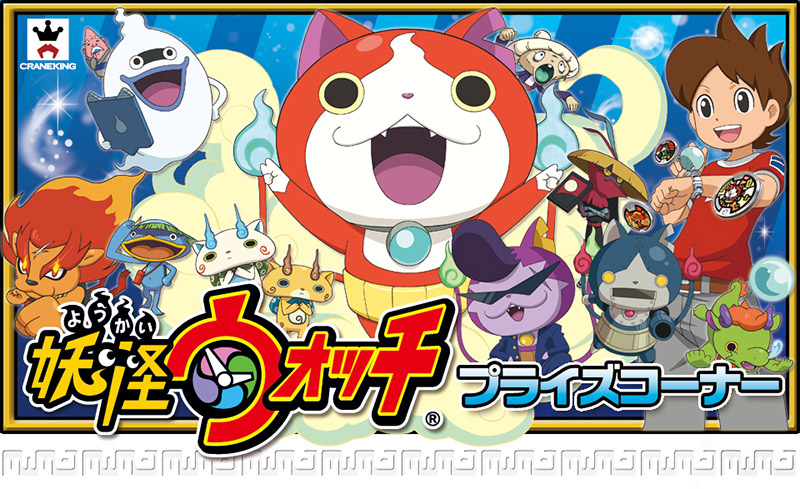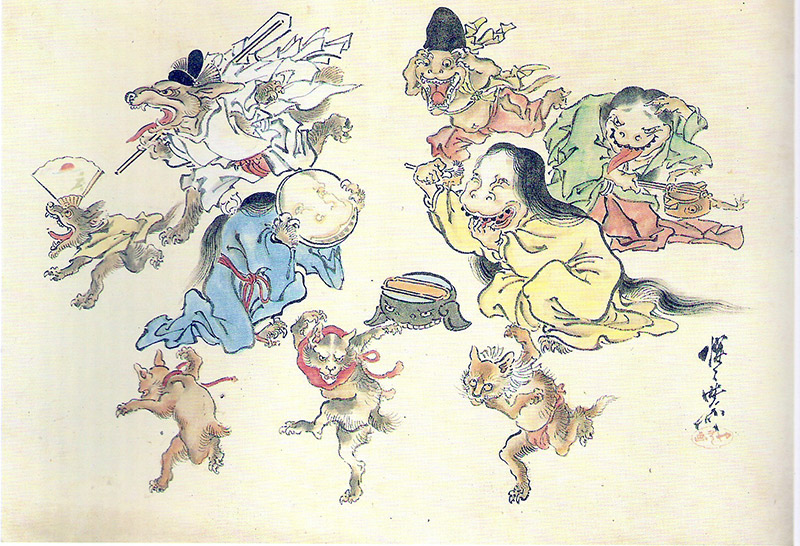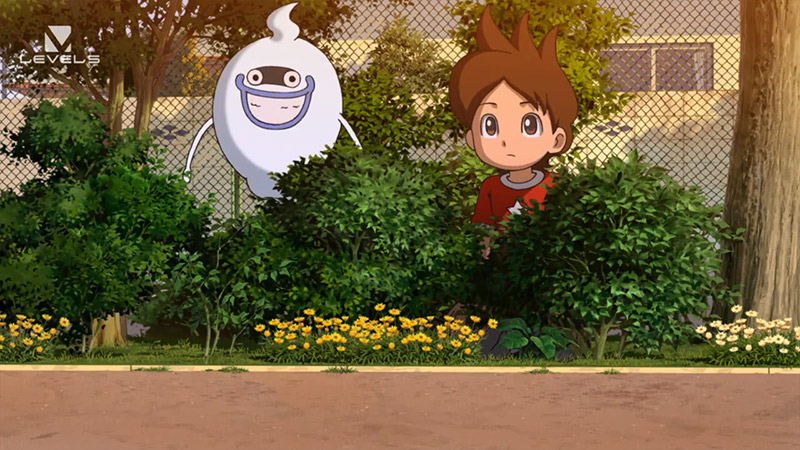“Can you draw Warunyan for me?” a girl asked during recess.
“Warunyan is cool, but Orochi is stronger!” a boy standing nearby shouted.
“I like Kyuubi!” another boy added as students gathered around the table.
My mind had stalled at Warunyan. Were my students speaking another language? What was Orochi? Who was Kyuubi? What was going on?!
Better than Pokemon

“What are you talking about?” I finally asked.
“They’re characters in Yo-Kai Watch (妖怪ウォッチ).” The answer offered little understanding. Yo-kai are Japanese ghosts. But what about the “watch”? Did it mean “to view”? Was it an actual wrist watch? Or did it have some other Japanese-English meaning? Was it an TV show? A game? The tables had turned, I became the student.
“It’s a game and anime,” one student explained.
“There’s a manga too,” a girl standing nearby added.
For years I prided myself on staying on top of the latest trends among students. Pokémon and Kamen Rider remained my student’s favorites year after year. But something new had crept into the picture. I had never heard of these characters. Had I finally fallen into the generation gap?
“You catch yo-kai. I have almost all of them.” a boy bragged.
“So it’s like Pokémon?” I asked.
“It’s better!” Nearby students nodded in agreement.
Better than Pokémon?! Could it be true? Did this Yo-kai Watch dethrone the reigning king?

Back in the late 1990’s I played Pokémon Blue on an old spinach-screened Gameboy. I never imagined the series would still be relevant nearly twenty years later – or that I’d be writing about it.
But Pokémon grew into a media giant, bolstering its popularity with popular games, anime, movies and cards. In Japan its characters are inescapable – appearing on t-shirts, socks, shoes, on bentou boxes and in bentou boxes as food.
Thanks to Pokémon, I could start conversations with most students. We discussed Pikachu and listed our favorite Pokémon – mine is Bulbasaur (Fushigidane in Japanese) just for the love saying it. Pokémon became a key to my students’ world.
But the times changed and I lost step. If I wanted stay on-top, I needed to experience Yo-kai Watch for myself.
The World of Yo-kai Watch

If you’re familiar with Pokémon or similar series, you know what to expect. One day a boy named Keita ventures into the woods hunting for bugs but finds the yo-kai named Whisper instead. Whisper gives Keita a watch that enables him to see and summon yo-kai.
Thanks to the open premise, Keita gets into all sorts of adventures. At times he’s a spirit detective, investigating strange occurrences or helping and befriending yo-kai. Other times Keita uses yo-kai to help himself or friends. Of course yokai battle as well.
Unlike Pokémon, Yo-kai Watch is set in “real-life” Japan. Most conflicts take place at Keita’s home, school or around his neighborhood. This gives the series a definitive Japanese feel.

The yo-kai add to the franchise’s Japanese stylings. Yo-kai Watch’s art walks a squiggly line between Pokémon’s monsters and Ni no Kuni’s familiar’s. But unlike those series, most of the yo-kai carry a distinct Japanese style – inspired by Japan’s classic ghosts and monsters.
For example there’s Jinmenken the human-faced dog. Naruto and Digimon fans will recognize Kyuubi the nine-tailed fox. A kappa, red and blue oni, and the wall monster nurikabe also appear.
If it sounds like Yo-kai Watch follows the footsteps of similar franchises, that’s because it does. By emulating strategies utilized by its predecessors, Yo-kai Watch is taking the child market by storm.
Child-Empowerment

Like many series before it, Yo-kai Watch empowers children. From Momotaro to Tetsujin 28, Japan has a long, rich history of stories that depict powerful, confident children facing adult (not in that way!) or other-worldly responsibilities.
Child audiences relate to child heroes, as if they can be heroes themselves. Popular child-empowerment series include Pokémon, Digimon, Pretty Cure and Jewelpet. Although the child hero has a long history in Japan, more franchises embrace it’s marketing value than ever before. Yo-kai Watch is no exception.
The Anime Angle
As with Pokémon, Yo-kai Watch debuted with a game, but an anime tie-in soon followed. Animated series expose aduiences to the game’s universe, acting as a high-budget, high-quality infomercial. Yo-kai Watch is no exception with quality animation, a catchy bgm and jokes that had me laughing.
But Yo-kai Watch engages its audience in a way few of its predecessors have. Keita utilizes each yo-kai’s specific skill-sets to overcome conflicts, challenging child viewers to practice logical thinking and problem solving skills. The show is more engaging as a result.
The Game Angle
Anime and game combos deepen the audience’s connection to a series. Instead of passively watching a hero’s actions, children can literally act as the hero.
For example, Pokémon players catch their own Pokémon, battle Pokémasters and earn their own badges. A game provides players the power to forge their own paths, separate from the anime’s story.
The same is true of Yo-kai Watch. Although players take the role of Keita, they wander the neighborhood, catching and battling yo-kai themselves. Their choices determine their success in the game – either by “beating it” or completing their yo-kai collection.
The Lure of Collectables

Yo-kai Watch embraces another staple of its predecessors – collectables. From bugs, to baseball cards, to pogs, and Beanie Babies, kids love collecting things. And the toy market obliges, with consistent new offerings.
Pokémon took collecting to new heights. Children had to catch ’em all – both in the game and in the real world as toys and cards.

Yo-kai Watch takes a similar route. Fans can collect yo-kai in the game and in real life, as yo-kai medals that represent the franchise’s characters. Collectables add a physical experience to a game and anime.
Choice – The Ultimate Empowerment

Famed psychologist Edward L. Deci stated, “Individuals… are likely to enjoy, prefer, and persist at activities that provide them with opportunities to make choices, to control their own outcomes, and to determine their own fates” (Chua 44).
Choice sparks interest (enjoyment) and feelings of power and responsibility (control) in both children and adults. It’s no coincidence that many of today’s franchises exploit our preference for choice.
Yo-kai Watch is no exception. Which yo-kai will you level up? Which metal will you trade with your friend? How will you organize your collection? Where will you store it? Yo-kai Watch’s games and collectibles empower and satisfy children with virtual and material acts of choice, possession, organization, and responsibility.
Yo-kai Watch Appeals to Both Sexes

While series like Kamen Rider and Jewelpet focus on a specific gender, Pokémon and Yo-kai Watch tap a larger share of the market by appealing to both sexes. How do they accomplish this?
First, Pokémon and Yo-kai Watch games allow players to choose their sex. Next, Pokémon and Yo-kai Watch’s characters designs appeal to both sexes, varying in style and color. There are cool, masculine creatures as well as cute, feminine ones. Finally Yo-kai Watch staged a unique manga strategy. According to Wikipedia there are separate shōnen (boy’s) and shōjo (girl’s) versions of the manga.
By following in Pokémon’s footsteps and utilizing a marketing strategy of its own, it’s no wonder Yo-kai Watch garnered cross-gender appeal. In fact, I have never seen a series that had so many boys and girls talking about it.
Yo-kai Come West

While Yo-kai Watch has yet to debut in the West, plans are in the works. “We think there’s a fair chance (of a western localization),” Siliconera.com reported, “since Level-5 filed a trademark for Yo-kai Watch in the USA.”
Marc Harrington, of Dentsu Entertainment USA commented, “Several American companies that keep their eye on Japanese content and ratings success have already expressed interest in the title.”
But how will it fare? Can Yo-kai Watch recreate Pokémon’s global success? Pokémon’s ambiguous setting and characters give it a broad appeal in the global market. Unlike Pokémon, Yo-kai Watch is definitively Japanese, which has lead to mixed results in the past.
But the times are changing. Due to availability and exposure, today’s Western audiences are more accustomed to Japanese media and culture. If Japan-centric Digimon could find success abroad, there’s no reason to believe Yo-kai Watch can’t. The only question is, to what degree?
I’ll Be Yo-kai Watch-ing

Becoming familiar with children’s interests creates a bridge to their world. As a teacher, parent or friend that connection can overcome age differences and forge strong relationships.
By familiarizing myself with Yo-kai Watch, a child marketing juggernaut, I’ve climbed out of the generation gap and rejoined my students’ conversations. Whisper has replaced Pikachu at our recess discussions and we now list our favorite yo-kai instead of Pokémon – mine is Kyuubi because it looks badass and is fun to say. I just hope Yo-kai Watch becomes a long-time success, so I can ride its popularity for decades to come.
